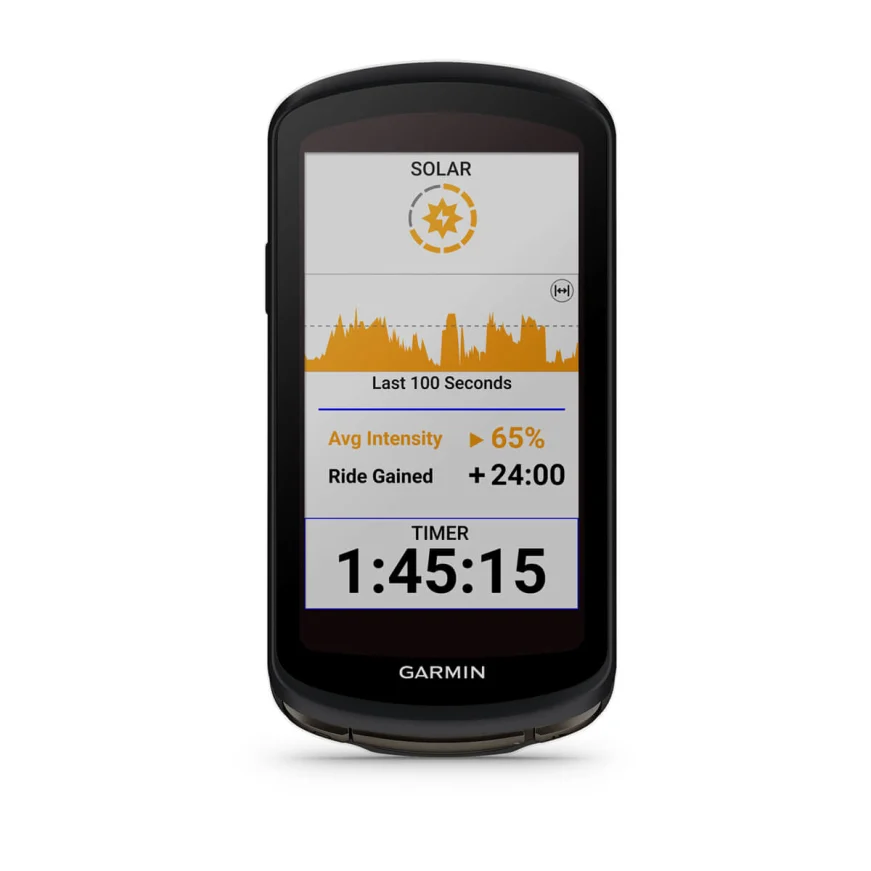
Do I Need a Power Meter? The Case for Functional Threshold Power
Cycling rides at the forefront of quantified human performance and data-driven training guidance. This is largely due to the introduction of power meters combined with the work of pioneering sports scientists, who matched cycling power data with physiological knowledge to develop new training standards and coaching methods.
Adding a power meter to your bike unlocks a world of new insights and perspectives. You can easily diagnose your strengths and weaknesses as a rider and adapt workouts and program training sessions according to your own personal needs and abilities. When you have a workout dialed up, you can execute it with precision. You join a community of like-minded athletes with new ways of talking about, thinking about and actually completing training.
Power-based training is currently enjoying a surge in popularity. This growth is supported by the rise of smart trainers and virtual environments like the Tacx® training app, Zwift and TrainerRoad. Translating your performance into watts can propel you through digital worlds as you connect with friends, rivals and passionate enthusiasts around the world along the way.
With all the data power meters have to offer, it can feel like swimming in the deep end. It’s not easy to know where to focus and where to invest your attention. One metric, however, stands out as being particularly valuable. Functional threshold power (FTP) is the metric that turns on the lights. From an endurance perspective, FTP represents the most critical aspect of your performance capacity and provides an all-important personal basis for dialing in your efforts with customized training zones.
What is functional threshold power?
Functional threshold power is the highest power output, measured in watts, that you can sustain without rapidly fatiguing. This deliberately simple yet useful definition originates with Andrew Coggan, Ph.D., an early and well-known advocate of power-based training. Well-trained cyclists can typically maintain FTP-level output for around an hour. Fatigue accumulates rapidly when your power output exceeds your FTP. Reduce your power output even slightly below your FTP and you can probably keep going for hours. By promising this kind of insight, FTP clearly has a lot to offer cyclists eager to take their performance to the next level.
But what about VO2 max? VO2 max and FTP share an important relationship in the pantheon of performance metrics. VO2 max is the number that describes your maximum capacity for aerobic energy production. FTP, on the other hand, captures your ability to sustain higher intensities relative to your maximum aerobic capacity. For two cyclists with similar VO2 max scores, the rider with the higher FTP has a significant advantage in most competitive settings. And importantly, just like VO2 max, FTP can be improved with targeted training methods.
It’s worth noting that FTP can be expressed in both absolute and relative terms. In absolute terms, your FTP is the total wattage of your power output. Relative expressions of FTP frame this insight as a power-to-weight ratio (watts per kilo of body weight). The ability to sustain higher power at lower body weights is a particularly important predictor of success in races that involve major climbs.
What makes FTP so important?
FTP is a remarkably practical insight for training and performance. You can use your FTP to guide key decisions without knowing anything more about it. Simply perform a 60-minute time trial, a more popular 20-minute test or a ramp with increasing intensity to determine your FTP. Select Garmin cycling computers and multisport watches can also estimate your FTP during any cycling activity you record that includes enough time spent at different intensities, above and below your FTP. This method uses a combination of heart rate, heart rate variability and power data, so you need to have a chest belt-type heart rate strap and a power meter paired with your Garmin head unit.
To understand why FTP offers such almost magical insight, you need to explore what is happening below the surface at a physiological level. It’s not the easiest subject to study but knowing why things work the way they do makes the concept your own.
Our understanding of human performance has benefited from investigations grounded in a variety of perspectives over the years. Unfortunately, all this attention has also managed to muddy the waters for curious-minded athletes eager to learn about the subject and apply it to their own development. Each perspective, each avenue of research seems to bring with it a slightly different set of terminology.
Lactate threshold (LT2), anaerobic threshold (AT), onset of blood lactate accumulation (OBLA), maximal lactate steady state (MLSS) and the second ventilatory threshold (VT2) are all terms used by different perspectives to capture a sense or aspect of what FTP is expressing.
Experts are quick (and right) to point out subtle differences between the underlying phenomenon captured by these terms and their meaning, but all belong to the same family of investigation. All are used to explore and understand the dynamic relationship between performance intensity and sustainability.
Physiology and the science behind FTP
The scientific basis for FTP offering useful insight is metabolic in nature. It connects what you do on your bike to what is happening inside your body.
As you know, a power meter quantifies performance in terms of watts. And a watt is a measure of energy transfer over time, one joule per second to be precise. Your power meter is reporting energy transfer from your body to your bike. This energy is transferred via the pedals driven by working muscles. But where does the energy come from that powers your muscle contractions? This energy comes from breaking down adenosine triphosphate (ATP) molecules, a very important biological resource often called the fuel of life.
Your body maintains only a very limited supply of ATP. This readily available supply is consumed quickly during physical activity. If you want to keep going, you need to produce more ATP at a rate equal to the energy demand (i.e., power output) of your performance. The dynamic relationship between power output and how you make ATP holds the key to understanding why FTP is such a critical metric for endurance performance.
ATP production is the result of metabolic processes, or chemical reactions, that work to transfer the energy stored in macronutrients (carbohydrates in the form of glucose and fats) into molecular fuel that powers muscle cell contractions. For the most part, the ATP you use when cycling is produced aerobically, which means that oxygen was available and used in the process. Aerobic creation of ATP is highly efficient, but is limited by the ability of your heart, lungs and circulatory system to import oxygen from the atmosphere and transport it to your muscles where it is needed. When the energy demand of your performance exceeds what can be produced with the oxygen available at the time, the ATP needed to make up the difference comes from your anaerobic energy pathways.
Lactate is a byproduct of anaerobic metabolism created when glucose molecules are broken down for fuel. Small amounts of lactate are always present in your blood supply, even when you are resting. Start to exercise and the lactate concentration in your blood increases as you increase the intensity of your performance. Some of these lactate molecules become fuel for aerobic energy production and some are cleared away from your working muscles by your circulatory system, ultimately to be reconstituted as glucose in your liver.
Continue to increase the intensity of your performance and eventually the rate of lactate production will eclipse your ability to clear it away, so it accumulates. This results in the rapid onset of fatigue.
FTP tests are a practical and effective way of identifying the point at which the energy demand of your performance results in more lactate production than can be continuously cleared away from your muscles by your circulatory system. A more traditional approach would require taking blood samples during exercise and analyzing them in a laboratory.
For experienced cyclists with long training histories, the critical power output where lactate production exceeds clearance rates occurs usually somewhere around 70-80% of VO2 max level intensity. Untrained individuals reach this point at much lower intensities, often between 50-60% of VO2 max intensity. This remarkable difference is generally the result of improved aerobic energy production capabilities achieved through training.
How can I improve my FTP?
Increasing your FTP essentially means boosting your tolerance for high-intensity performance.
Like any aspect of performance, the work that you put in to build a strong, well-balanced foundation is a prerequisite for getting the full benefit of more targeted specialty workouts. Long, low-intensity aerobic training sessions set the stage for FTP-focused workouts by building muscular and cardiorespiratory endurance. Anaerobic and sprint training sessions enhance neuromuscular coordination and grow absolute maximum power output capacity both of which improve overall cycling efficiency.
So with that in mind, how do you recognize or design an FTP-focused workout?
When it comes to training, how you challenge yourself determines the results you get. This is known as the specificity principle of training. Tackling a hard challenge signals your body that it’s time to adapt in ways that make tackling similar challenges easier in the future. These physiological adaptations occur in the recovery period after a challenge when your body is repairing itself and restoring depleted resources. Repeating this cycle of specific loading and adequate recovery is the basis of achieving performance games over time.
If you want to improve your ability to tolerate high-intensity efforts, you need to strain and stimulate your body with high-intensity efforts. Interval workouts are popular and widely used to target both VO2 max and FTP development. The reason is simple. Punctuating higher intensity segments with periods of lower intensity activity allows you to perform more high-intensity work than you would in a workout built around a single continuous exertion.
VO2 max level intensity is only realistically sustainable for 6-10 minutes. As a result, VO2 max targeting interval workouts typically feature shorter (2-3 minutes), higher intensity intervals. Because VO2 max-focused workouts involve pushing yourself above and beyond FTP intensities, these rides do have a positive developmental impact on your general ability to tolerate high-intensity performance.
Workouts designed to specifically target FTP improvement typically involve pushing yourself at FTP-level intensity for roughly 20 minutes at a time. The extended duration of these intervals means longer recovery periods are also needed, and you will perform fewer of them over the course a ride.
Training to improve your FTP is both mentally challenging and physically exhausting. Avoid scheduling high-intensity workouts on consecutive days and give yourself plenty of time to recover.
If you’re not sure what type of workout would be best for you today, you can always check the daily workout suggestion on your Garmin device. There you will find an ideal training session based on your current fitness level, recent training activities and recovery levels. Even daily stress levels and sleep quality are considered in your workout suggestion when using select Garmin devices with 24/7 lifestyle tracking capabilities.







